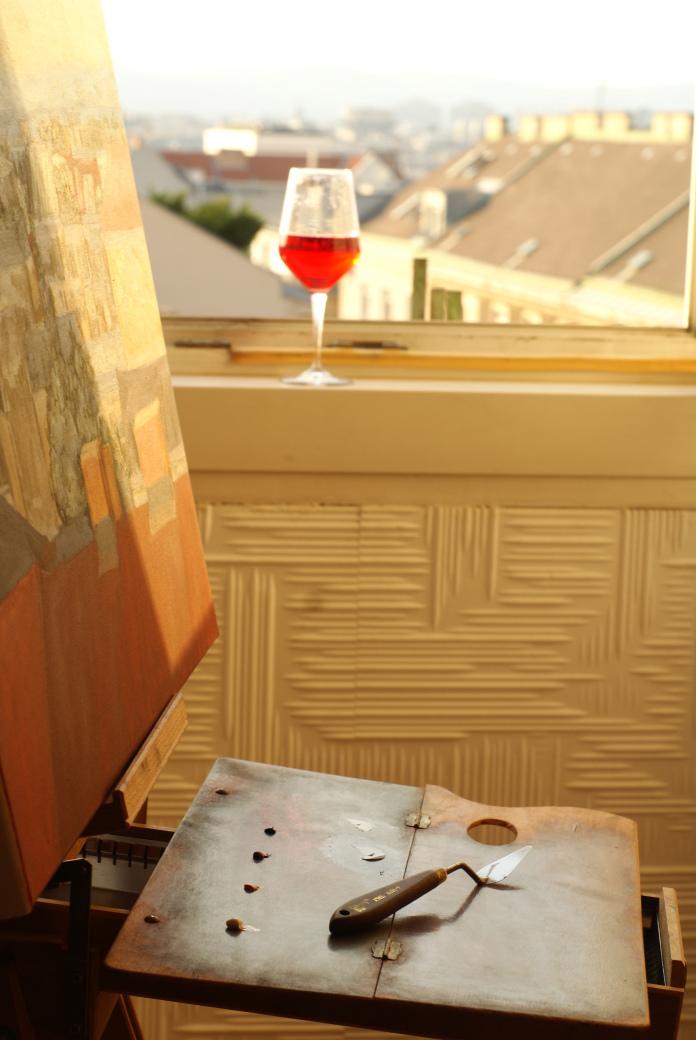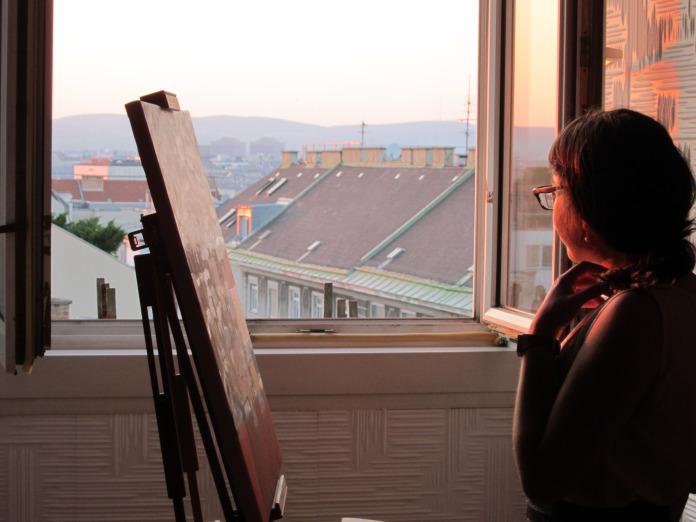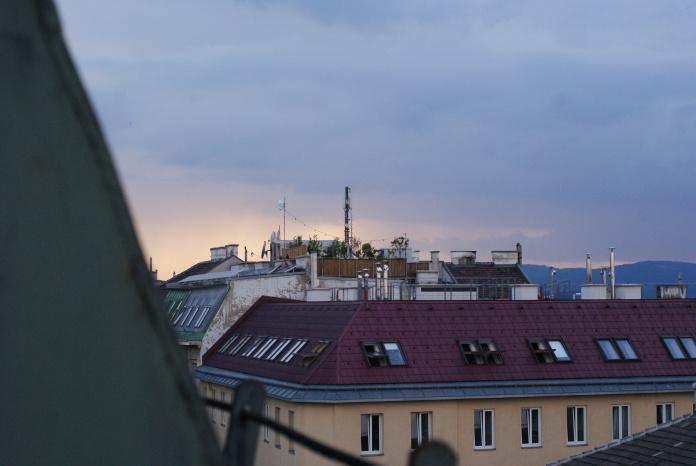
After Caravaggio, Madonna of the rosary
The role of the artist is perhaps less clear than ever, and hence the motives of the artist are also something hazy and questioned. In centuries past, the artist performed practical and useful functions—depicting all manner of things from scholarly medical diagrams to religious narratives for the illiterate to portraits to be passed to posterity. It’s easy to imagine the artist’s role as comfortably integrated into society, a practical trade like any other.
Now that everyone reads, and photography quickly and cheaply records near anything we can imagine, there is no obvious need for someone to labor over manually producing our visual records. And since there is no need, the artist is expected to defend her chosen position, which appears to the modern mind superfluous and something of a luxury. In our pragmatic world, the deep conviction that you simply are a painter, and that above all you are compelled to paint, is unacceptable and as irrelevant as the painstaking work you produce, which, by the way, can I photograph it and tweet it to all my friends? #artistingallery #noway

I think there are (to simplify) two breeds of artist: the kind that sees what has been done before and is inspired by it, and the kind that rejects it. This division seems to rest on how one perceives one’s role as an artist. The contemporary position seems uncannily aligned with—my inner Marxist rears her head—capitalism: and this should hardly be surprising, since capitalism flavours our most prevalent conceptions of value and most other aspects of our lives. The unshaking belief in progress is wed to capitalism, and drives our economies, our businesses, the funding of our scientific programs. A contribution is only made to the world in so far as one has ‘value added,’ which is specifically understood as having improved on what was already there. This mindset views history (art history included, it would seem) as a long, straight line trending ever upwards. I find this concept of historical improvement to be very troubling.
And I am not alone. It seems that, armed with this idea of improvement, many painters see the old masters and abandon this task completely. Why learn to draw if one cannot better Rubens? Why learn how to model form if one can’t hope to surpass Michelangelo? (Which in itself raises the interesting question, did Rubens surpass Michelangelo?) In despair at such a project, it seems sensible to sidestep it and simply do something else. To think of something clever and new, and succeed in novelty rather than skill. The artists who pursue such work must really have internalised this mindset of improvement, and hence see their role as an artist to contribute something value-added to the world. Producing more of the same at a standard of excellence does not fit with this progress-oriented view of value.

Now I don’t study Rubens with the aim of becoming Rubens. I admire him endlessly, and hope to learn all I can from him. And he is not the only artist I mine for wisdom. No, when I dig deeper to understand how and why, and when I invest time in learning proportions of the figure and anatomy, it is not to imitate but ultimately to refine my own particular skills which will be expressed in my own way. I have other concerns than Rubens did, and I experience the world in a fundamentally different way than he did. These things are going to be apparent in my own work, and it will belong to its own time and place. Bryson (in Nelson, p. 177) argues that with the technical knowledge gained by the apprentice in the atelier, ‘as the painter takes up position before the canvas and begins to work, there is an encounter between this complex of practical knowledge and the new situation; under the pressure of the novel demands of the encounter the complex itself is modified and the tradition extended.’
Ah, now there is a word we can latch onto! Extended. This is the view that the first kind of artist I mentioned must take. This artist doesn’t go to look at the Van Dycks and think to herself, ‘I can improve on these!’ But she—wholly reasonably—sees them, admires them, and reflects that Van Dyck, that Rubens, that Michelangelo were mere mortals like herself who simply dedicated their whole lives to their perfectly respectable trade, worked hard and hence got very good at it, as can she. The focus is not on what went before and how to differentiate oneself or prove oneself measurably better, but rather on excellence itself. Excellence, rather than being tied to value, is associated with that old concept of virtue. It would be absurd to say, ‘I won’t aspire to honesty or integrity or courage, because they have already been done.’ Rather, the virtuous person cultivates these characteristics in himself in order to be as excellent as possible. The pursuit of excellence in his field echoes this. He refines his craft in order to be the best he can be, irrespective of what others are doing or have done.

On this view, it doesn’t matter how much amazing art is already in the world. It didn’t matter to Veronese that he came to the party years after Titian, just as the chronology doesn’t matter to the art gallery visitor, who is dazzled by them side by side. They both contribute their own visions and in so doing contribute meaningfully to a long tradition of representational painting. This tradition is not exhausted so long as there are artists born in new times, experiencing new things and finding new positions to express with their own capacities and skills.
Is this appeal to excellence and thus virtue a moral imperative to extend the artistic tradition? Perhaps so. Perhaps to focus on value is to risk getting muddied in market-oriented ideas; perhaps thinking too hard about how one compares to others is a distraction from the real question of what you can do with what you have. Focusing on how you can improve yourself matters first; your contribution will be measured by this. If your motive as a painter is to pursue excellence in your field rather than to be better than everyone you ever heard of, you will probably also be more comfortable with your role as a painter, partaking in a long and esteemed tradition, not a fading craft.
Nelson, Robert. 2010. The visual language of painting: An aesthetic analysis of representational technique. Australian Scholarly Publishing: Melbourne.

